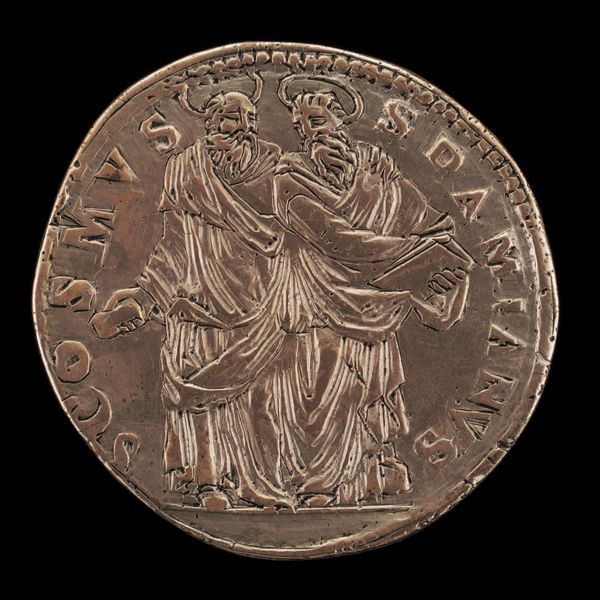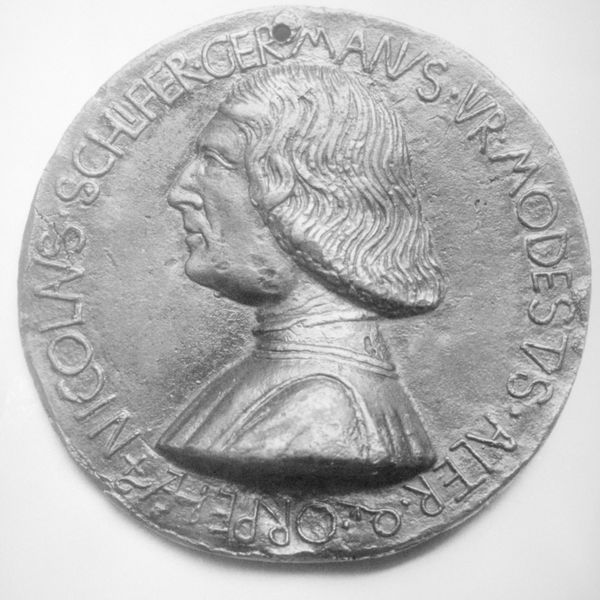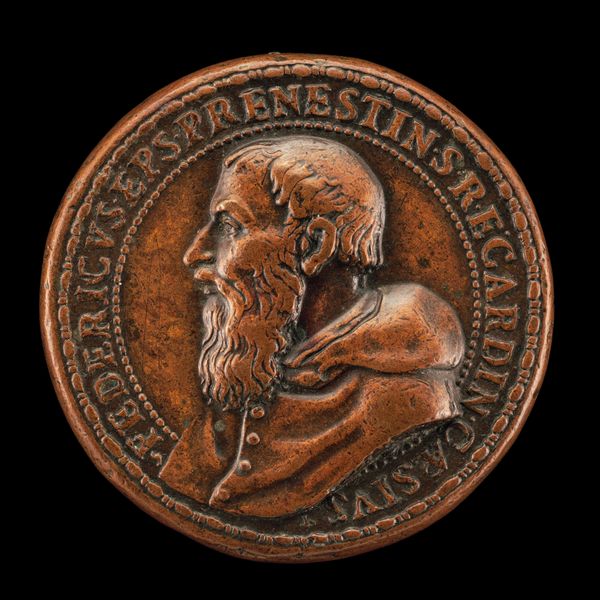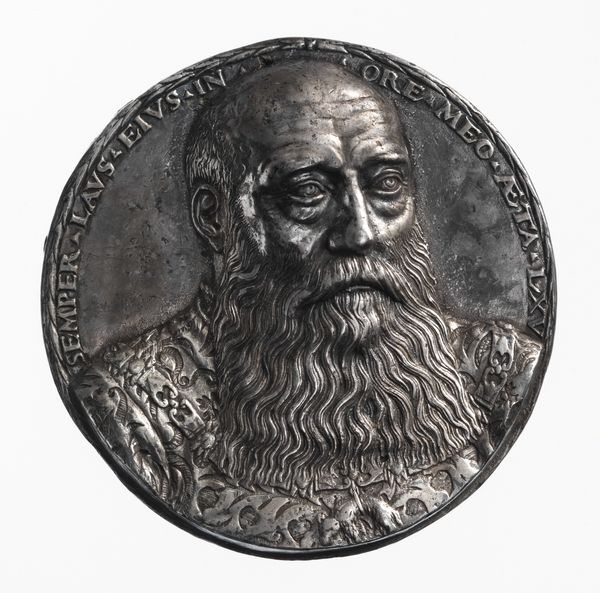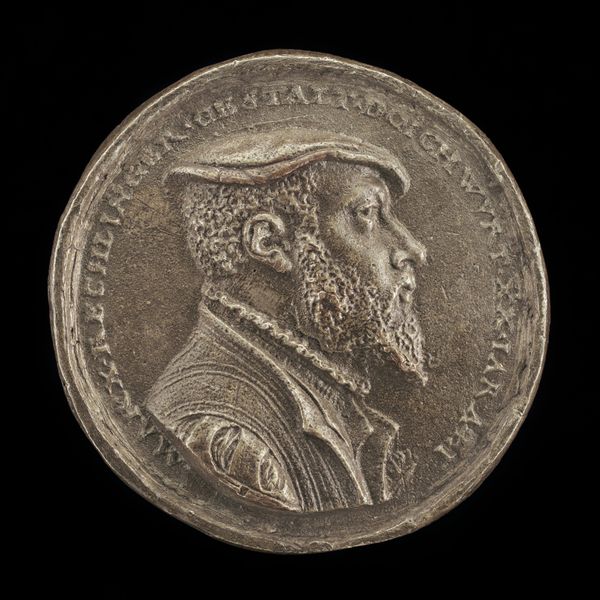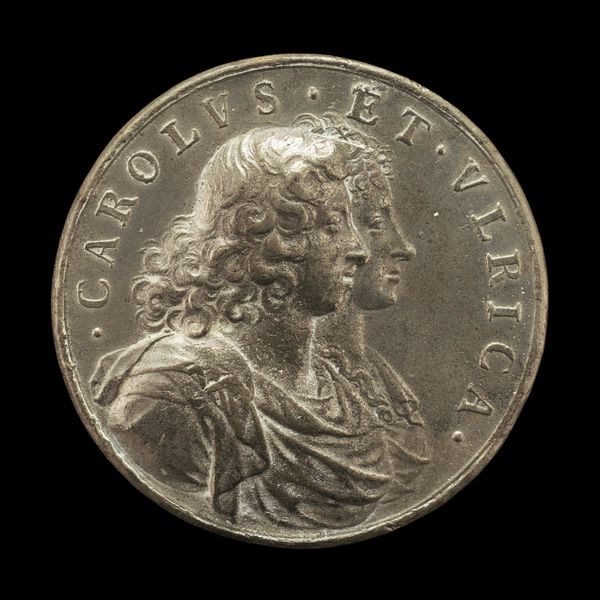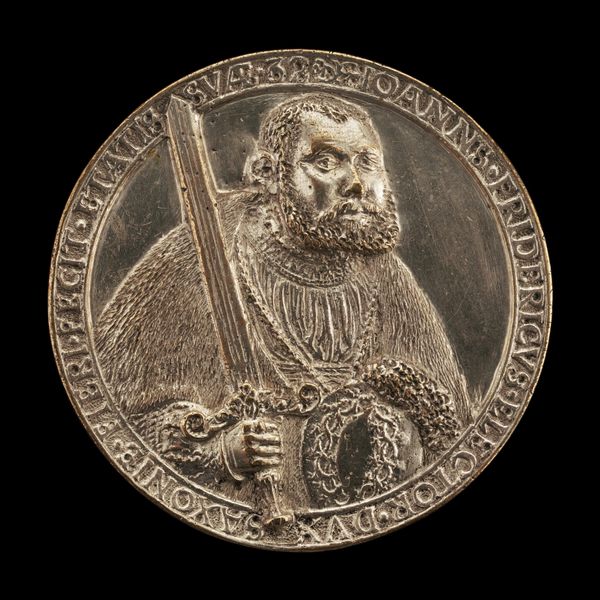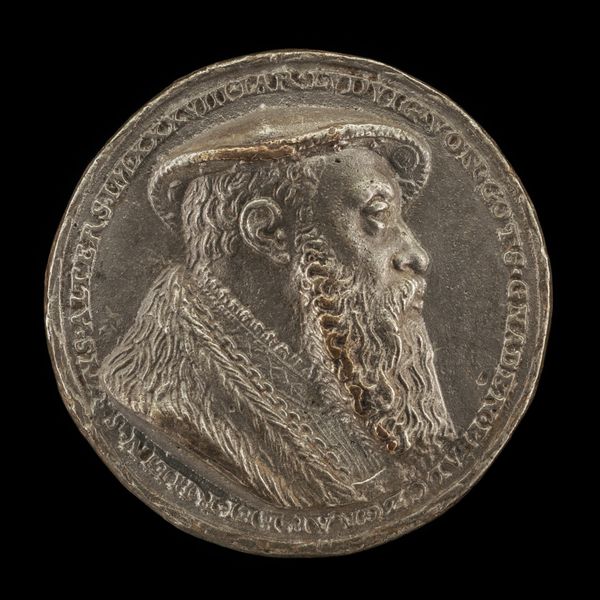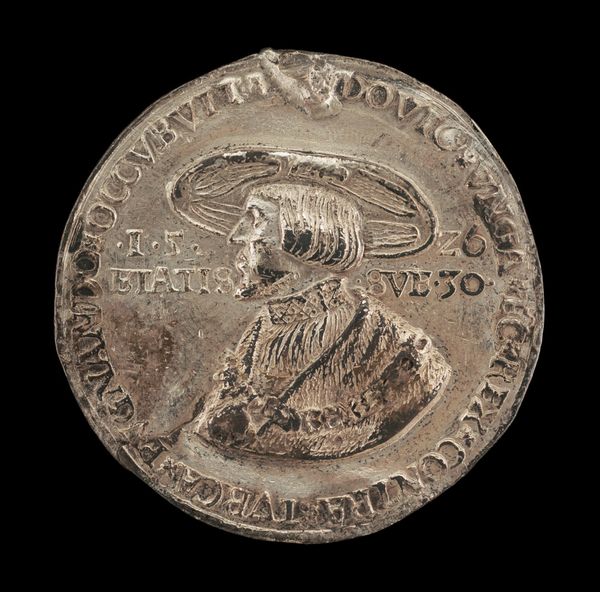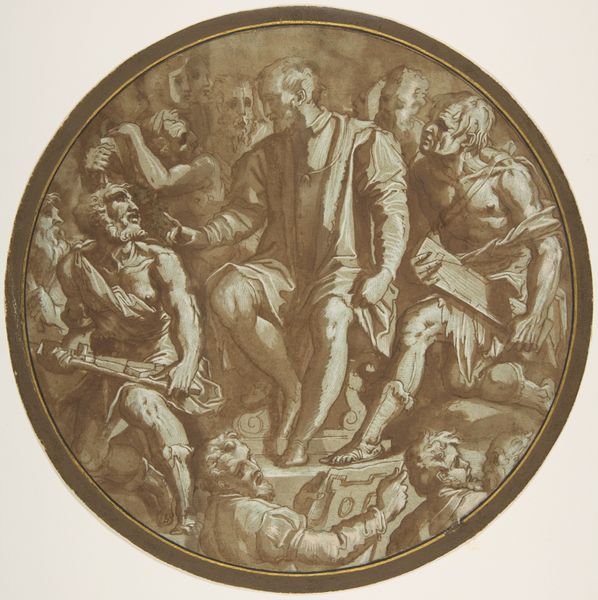
Willibald Pirkheimer, 1470-1530, and Albrecht Dürer, 1471-1528
0:00
0:00
metal, relief, sculpture
#
portrait
#
metal
#
sculpture
#
relief
#
11_renaissance
#
sculpture
#
northern-renaissance
Dimensions: overall (oval): 4.33 × 5.36 cm (1 11/16 × 2 1/8 in.) gross weight: 17.49 gr (0.039 lb.)
Copyright: National Gallery of Art: CC0 1.0
Editor: This striking metal relief features Willibald Pirkheimer and Albrecht Dürer. It's... well, it looks quite serious, doesn't it? Two very important figures, presented in a rather formal, almost imposing way. What symbols stand out to you in this work? Curator: Indeed. What strikes me is how Dürer chose to portray himself alongside Pirkheimer, his close friend and confidant. Pirkheimer, a humanist, is placed beside Dürer, with a tool behind them, possibly signifying Dürer's profession, while the overall impression is one of shared intellect and accomplishment. The choice of metal itself is potent; it suggests permanence and commemorates their intellectual bond. Doesn't the placement of their portraits—Pirkheimer, turned outward and forward, juxtaposed with Dürer staring directly, somewhat askance—suggest a dynamic relationship of leadership and authorship, respectively? Editor: That's a fascinating take. I hadn't considered how their gazes create a sort of visual dialogue. It seems to almost create two sides within one space. Is the gaze intended to communicate some division, or perhaps something about authorship? Curator: Exactly. Remember that during the Renaissance, the revival of classical antiquity had spurred profound cultural changes, as well as an interest in individual identity and lasting fame. Placing the two together is very interesting. One has to ask oneself what these signifiers of social status, achievement, and lasting renown, communicated to the society that consumed them. Consider, even, how the image resonates even now! What memories, anxieties, and longings does it awaken for us today? Editor: So, beyond just being a portrait, it's also making a statement about their contributions and maybe even how they saw themselves. I see so much more in this piece now. Curator: Precisely! The careful staging of imagery offers us access into not only historical portraiture but Renaissance values.
Comments
No comments
Be the first to comment and join the conversation on the ultimate creative platform.

